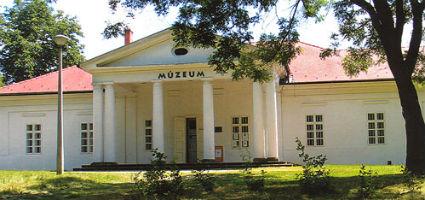2024. April 25. Thursday
Pál Kiss Museum - Tiszafüred
 |
Address: 5350, Tiszafüred Tariczky sétány 6.
Phone number: (59) 352-106
E-mail: kisspalmuz@gmail.com
Opening hours: Tue-Sat 9-12, 13-17
|
The exhibition has closed for visitors.
2016.05.01. - 2016.05.31.
Museum tickets, service costs:
|
Ticket for adults
|
500 HUF
|
/ capita
|
|
Group ticket for adults
(min. 10 people)
|
150 HUF
|
/ capita
|
|
Ticket for students
|
250 HUF
|
/ capita
|
|
Ticket for pensioners
|
250 HUF
|
/ capita
|
|
Ticket for families
(2 adults + max. 3 children)
|
750 HUF
|
/ family
|
|
Program ticket
|
300 HUF
|
/ capita
|
|
Season ticket
|
1000 HUF
|
|
|
Group guide
(max. 40 people)
|
2000 HUF
|
/ group
|
|
Photography
|
1000 HUF
|
|
|
Video
|
1000 HUF
|
We display two mammoth teeth from our old collection with the register number of 52. 892. 1 and of 52. 893. 1. The first was collected and given to our institution in 1881 by Mr. Ruttkay, Kálmán who was an important figure of water-engineering of River Tisza of those times.
The woolly mammoth was a huge mammal during pleistocene. Adult mammoth had to chewed 300-350 kg of vegetation daily, that is why the mammoth teeth were very interesting with their functional, shoe-box sized, and with their surface. As the woolly mammoth was a grasslands grazer it grew six sets of teeth over a lifetime. They had four teeth. Over the years, these molars began to wear and break apart. Behind the worn teeth, in both the jaw and skull, new teeth formed. The new teeth gradually pushed out the old set. Similar to a forward moving conveyor belt, the new teeth moved into position. Eventually, when the mammoth's last set of teeth worn away, the mammoth died through reduced ability to feed. Average life expectancy of the average mammoth was 60 to 80 years.
The woolly mammoth was a huge mammal during pleistocene. Adult mammoth had to chewed 300-350 kg of vegetation daily, that is why the mammoth teeth were very interesting with their functional, shoe-box sized, and with their surface. As the woolly mammoth was a grasslands grazer it grew six sets of teeth over a lifetime. They had four teeth. Over the years, these molars began to wear and break apart. Behind the worn teeth, in both the jaw and skull, new teeth formed. The new teeth gradually pushed out the old set. Similar to a forward moving conveyor belt, the new teeth moved into position. Eventually, when the mammoth's last set of teeth worn away, the mammoth died through reduced ability to feed. Average life expectancy of the average mammoth was 60 to 80 years.